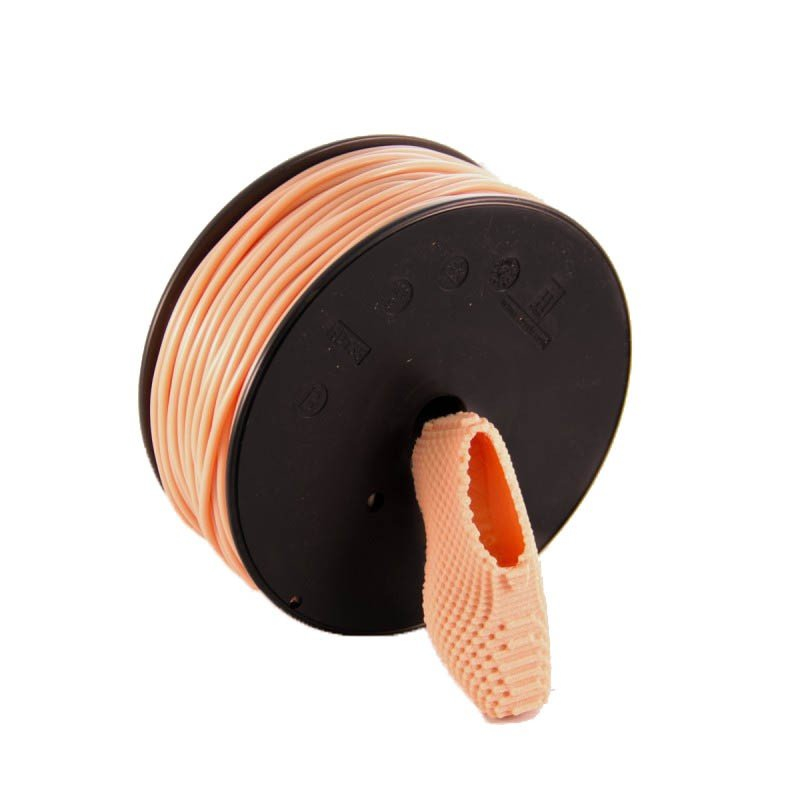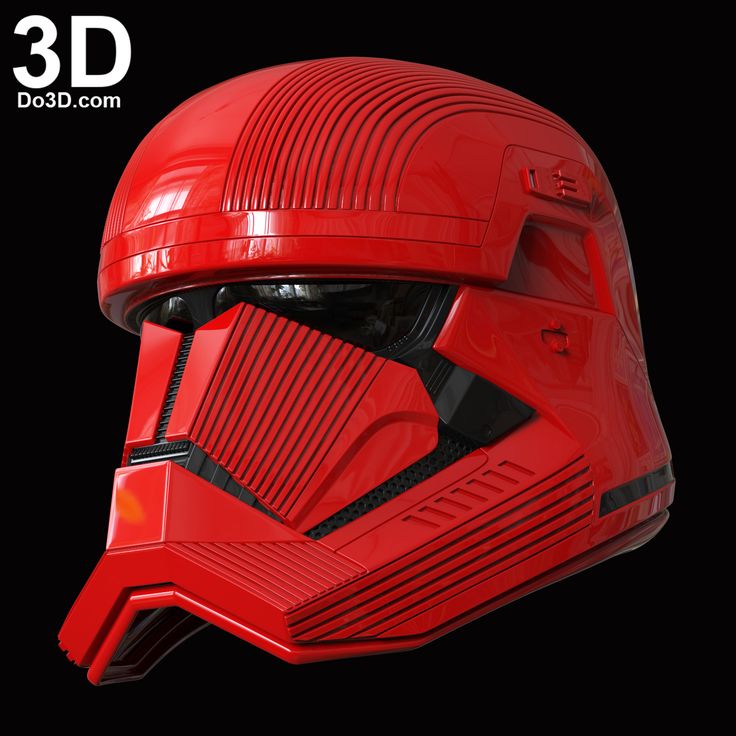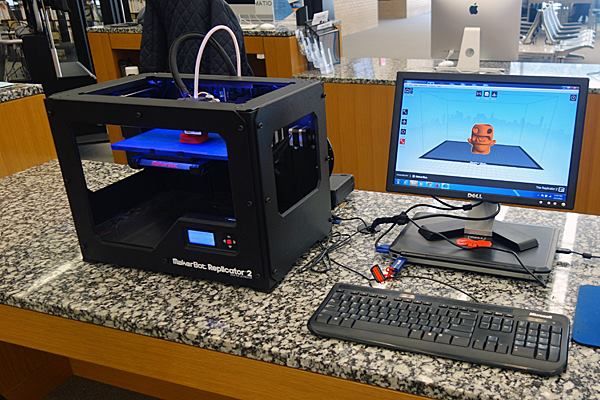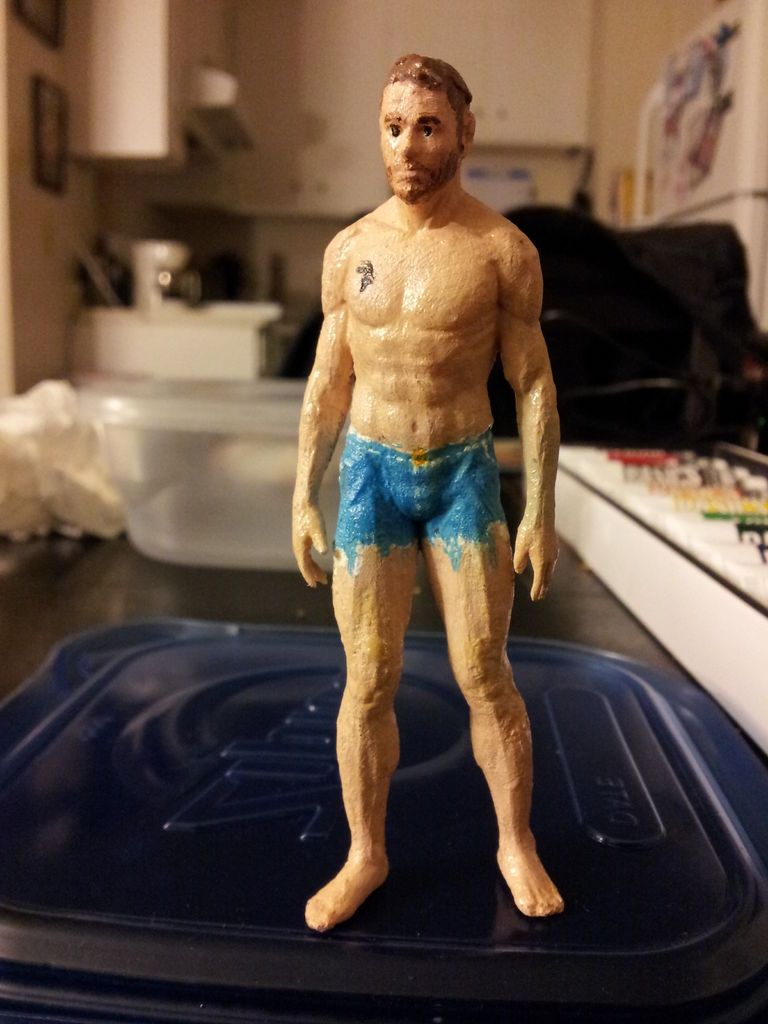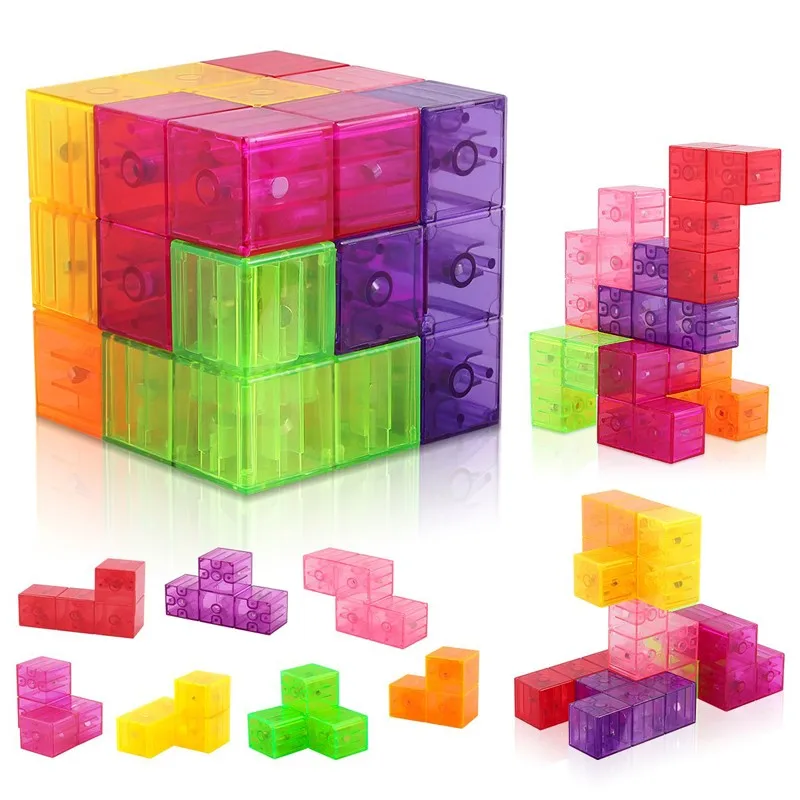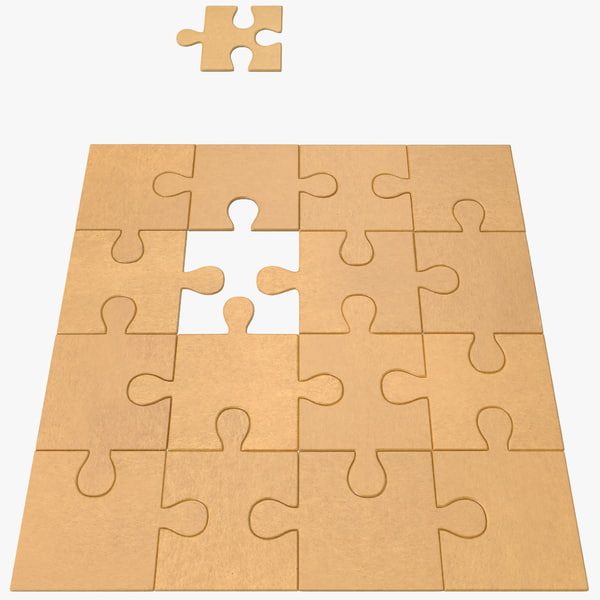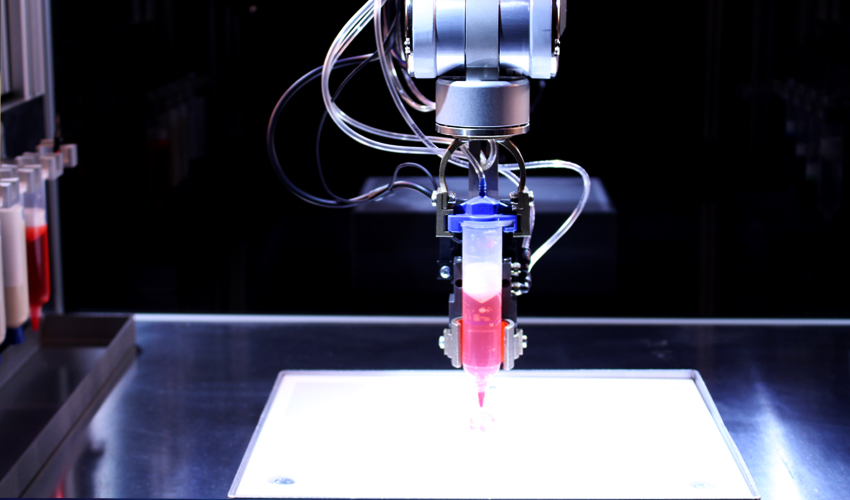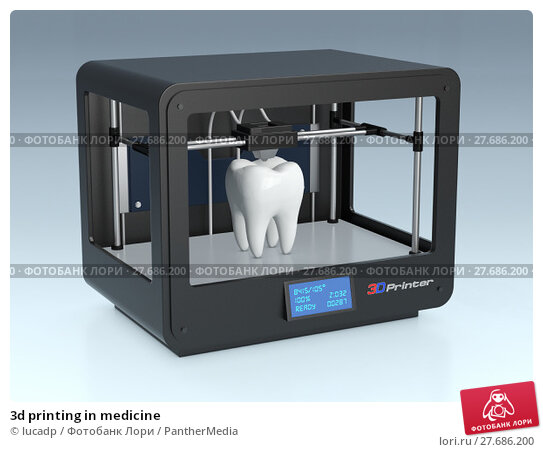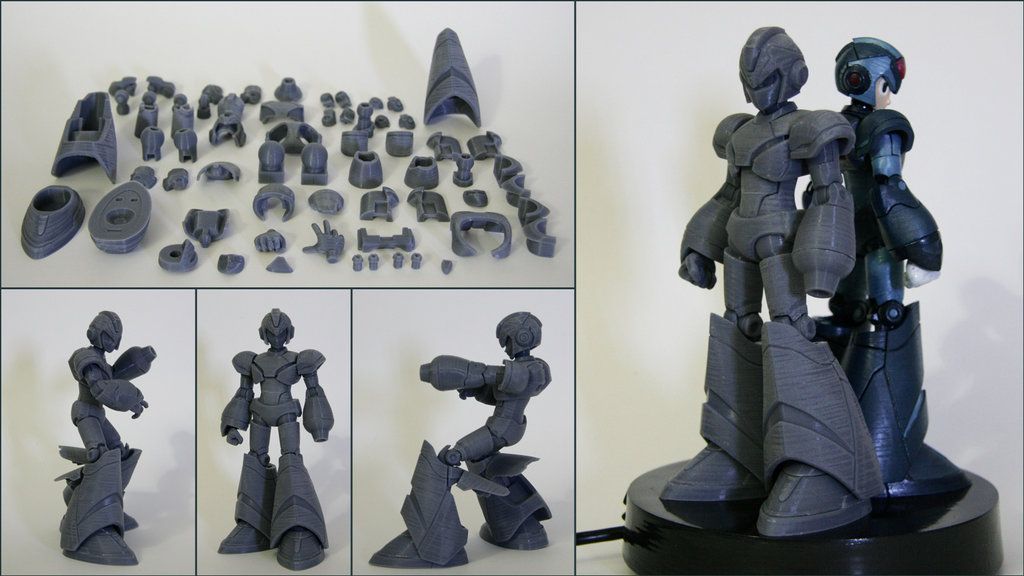Filaflex 3d printer
Filaflex
Discover everything you need to know about the most popular and valued flexible filament on the market. The most complete range of flexible filament, with a wide variety of elasticity or Shore hardness, get to know Filaflex!
What is Filaflex?
"Filaflex is the original pioneering and revolutionary elastic filament for 3D printers. It is a flexible TPU filament (thermoplastic polyurethane), which through an innovative manufacturing process, is able to obtain a filament of unparalleled elasticity and texture capable of being printable in an FDM 3D printer."
When and why was Filaflex born?
Filaflex was born in 2013 in Spain, specifically in Elda, a municipality in the province of Alicante. It is a material that arises in response to the need to create a new elastic and innovative material with respect to the proposals that were available at that time in the 3D printing market.
This is the history...
Why choose Filaflex?
ELASTICITY
Filaflex is an elastic filament (rather than a flexible filament) due to its mechanical properties, which means that, after stretching, the material returns to its original shape without altering its diameter or shape after the cessation of the force.
HIGH PRINT BED ADHESION
Filaflex is characterized by a great adhesion to the printing table, so it is a filament that does not need a hot table, blue tape, kapton tape, lacquer or any other spray adhesive when printing.
RESISTANCE
Filaflex is a material that is highly resistant to chemicals such as solvents, acetone and fuel. In addition to its chemical resistance, it is impact resistant and a very durable material.
SAFETY
Filaflex is odorless, non-toxic and can be in contact with skin. Its raw materials comply with the European standard and FDA regulations and our internal processes comply with the Good Manufacturing Practices regulation.
Its raw materials comply with the European standard and FDA regulations and our internal processes comply with the Good Manufacturing Practices regulation.
Discover the complete range of Filaflex flexible filaments
Filaments
Recreus
€33.20
The Filaflex 82A Original is the flagship elastic filament of the Filaflex range. The best-selling and most popular flexible filament for 3D printers. Shore hardness 82A 650% stretch High elasticity Resistant to solvents, fuel and acetone Odourless No hotbed required Made in the EU
Filaments
Recreus
€33.20
Filaflex 95A, ’Medium-Flex’, is the perfect flexible filament for beginners in flexible printing. It's a semi-flexible elastic filament, compatible with all 3D printers on the market, including those with a Bowden extruder (with tube). Shore hardness 95A 500% stretch Medium elasticity Compatible with all printers Resistant to solvents, fuel and acetone. ..
..
Filaments
Recreus
€45.10
Filaflex 70A, ’Ultra-Soft’, is a highly elastic and advanced flexible filament from the Filaflex range for 3D printers. Shore hardness 70A 900% stretch High elasticity Resistant to solvents, fuel and acetone Odourless No hotbed required Made in the EU
Last items in stock
Filaments
Recreus
€49.08
Filaflex 60A 'PRO', the most elastic and flexible filament on the market, only suitable for the most 'pro' and intrepid of flexible filament printing. Shore hardness 60A 950% stretch High elasticity Resistant to solvents, fuel and acetone Odourless No hotbed required Made in the EU
Applications and flexible parts that you can print with Filaflex
INSOLES
Personalized orthopedic insoles.
FLEXIBLE OBJECTS AND PARTS
Buffers, gaskets, tires, grippers,...
PROSTHESES AND ORGAN MODELS
Prosthesis of arms, hands, organs for simulation of surgical operations,...
TEXTILE PARTS AND ACCESSORIES
Textile garments, fabrics, printing on garments, bags, earrings,…
FOOTWEAR
Soles, shoes, sandals, slippers,...
Discover and try Filaflex!
The Filaflex 82A Original is the flagship elastic filament of the Filaflex range. The best-selling and most popular flexible filament for 3D printers. Shore hardness 82A 650% stretch High elasticity Resistant to solvents, fuel and acetone Odourless No hotbed required Made in the EU
€33.20
Filaflex 95A, ’Medium-Flex’, is the perfect flexible filament for beginners in flexible printing. It's a semi-flexible elastic filament, compatible with all 3D printers on the market, including those with a Bowden extruder (with tube). Shore hardness 95A 500% stretch Medium elasticity Compatible with all printers Resistant to solvents, fuel and acetone...
Shore hardness 95A 500% stretch Medium elasticity Compatible with all printers Resistant to solvents, fuel and acetone...
€33.20
Filaflex 70A, ’Ultra-Soft’, is a highly elastic and advanced flexible filament from the Filaflex range for 3D printers. Shore hardness 70A 900% stretch High elasticity Resistant to solvents, fuel and acetone Odourless No hotbed required Made in the EU
€45.10
Filaflex 60A 'PRO', the most elastic and flexible filament on the market, only suitable for the most 'pro' and intrepid of flexible filament printing. Shore hardness 60A 950% stretch High elasticity Resistant to solvents, fuel and acetone Odourless No hotbed required Made in the EU
Last items in stock
€49.08
How to print with Filaflex
Flexible filaments are great allies when creating products and allow us our imaginations to run free in the field of 3D printing. But just as it is a material with different properties to those of rigid filaments, its printing form is also different and a series of guidelines must be taken into account for the final result to be satisfactory. Let's get to know them!
But just as it is a material with different properties to those of rigid filaments, its printing form is also different and a series of guidelines must be taken into account for the final result to be satisfactory. Let's get to know them!
Print flexible filament
The saying "You can't push a rope" couldn't be more accurate as we get down to business when it comes to printing flexible filament on a 3D printer. Most of them will succeed. However, we will try to explain the most common issues to avoid and how to manage to 'push a rope' and achieve a good flexible filament print quality at acceptable speeds. In this case, replacing the rope with the flexible Filaflex filament for 3D printing.
What is Filaflex?
Filaflex is an elastic TPU filament, thermoplastic polyurethane.
It stands out for its excellent elastic properties, that is, after stretching it recovers its original shape without breaking or deforming, as long as the elastic limit of the material is not surpassed.
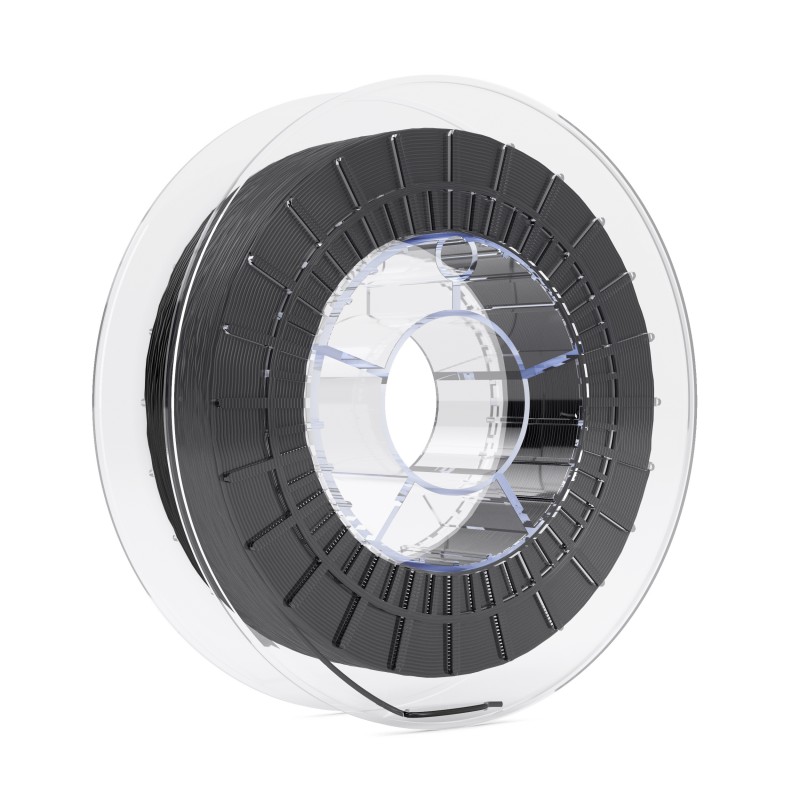
It has a high friction coefficient.
It is a soft and elastic grip material with multiple applications: textile, fashion, prosthetics, insoles, elastic parts for machines, protective covers for devices, surgical organs, etc.
It must be remembered that Filaflex is characterized by high adhesion with the printing bed, so it does not need a hot table, blue tape, Kapton tape, lacquer or any other adhesive substance.
It is odourless, resistant to solvents, acetone and fuel.
In addition, it is not toxic and can be in contact with the skin (for more information on its medical or food use, contact our team).

The Filaflex range is made up of 4 filament models that are classified according to their Shore hardness. The Shore hardness of elastic filaments is measured on the 'A' scale. The higher the number of its Shore hardness on the scale (95A), the less elastic it will be and the lower the number (60A) the more elastic and softer it is. The 4 Filaflex models are as follows:
Filaflex 95A 'Medium-Flex'
It is the easiest flexible filament to print in the entire range and the most compatible with all 3D printers on the market, including Bowden type printers.
Filaflex 82A 'Original'
With an 82A Shore hardness, it is the best-selling and most appreciated filament in the range.
With it, we obtain a great elasticity in the pieces while it is easy to print in most printers.
Filaflex 70A 'Ultra-Soft'
With a Shore hardness of 70A, it is a filament that offers advanced elasticity and softness.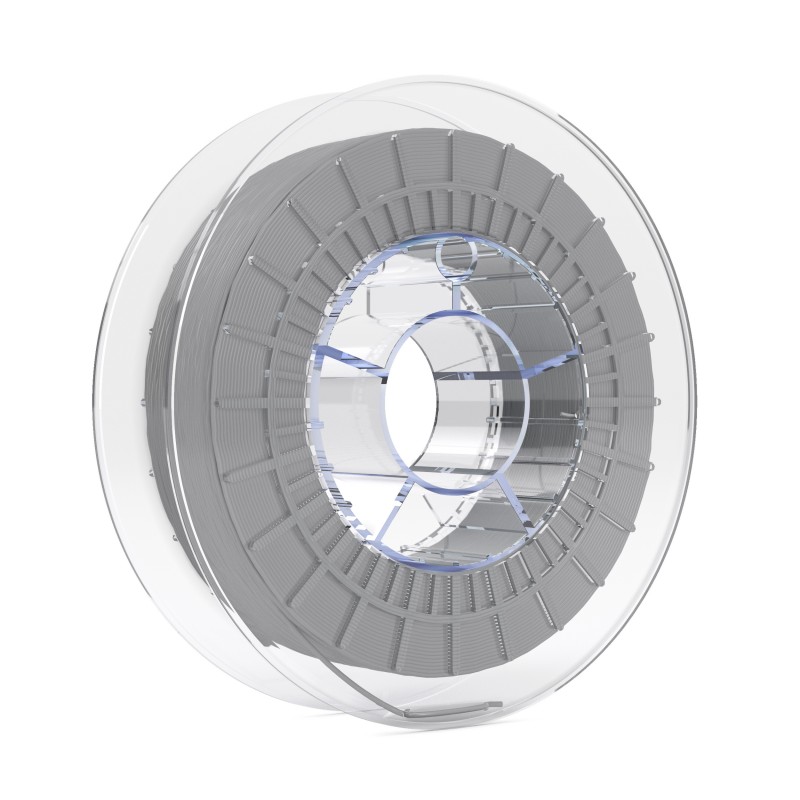
It must be printed on direct extrusion printers and is incompatible with 'all metal' hotends.
Filaflex 60A 'PRO'
With the lowest Shore hardness of all, 60A, it is the most elastic filament in the entire range and even in the flexible filament market.
It must be printed on direct extrusion printers and is incompatible with 'all metal' hotends.
Guidelines to bear in mind when printing with Filaflex
Next, we are going to detail what are the main challenges or issues when printing with flexible filament and the ways to solve them in order to print this material without any problem.
Challenge 1 | Filament jam in the extruder
It occurs when the filament is not correctly inserted into the hotend due to the long distance or gap that may remain between the extruder pulley and the filament inlet hole. There may also be the possibility that the filament clogs the carriages, causing the steps to jump.
Solutions to filament jam in the extruder
To avoid this issue, we must eliminate any gap that may exist between the thrust pulleys and the inlet hole of the extruder hotend. In this way the filament will be fully guided from the pulleys and the hotend, avoiding jams or tangles. In some extruders it is very simple, especially in REP-RAP printers, but in others it can be somewhat more complex. Next, we are going to see two options:
OPTION 1
Placement of a small support wedge between the extruder pulleys and the inlet hole of the flexible filament to the hotend. There are several models that you can print in 3D, this model or this other one among many more.
OPTION 2
Print a new extruder designed for flexible filament. Like, for example, this one designed by Steve Woods from Gyrobot, one and even this other one. You also have this option available, among many others.
Challenge 2 | Friction
Another issue with flexible filament printing is the excessive friction that occurs before and after the extruder.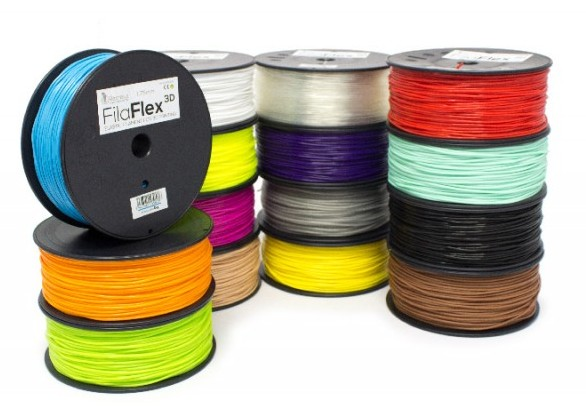 This friction can cause issues that result in more pressure on the motor pulley and ultimately lead to filament feed conflicts.
This friction can cause issues that result in more pressure on the motor pulley and ultimately lead to filament feed conflicts.
Solution for the back of the extruder
Keep the minimum distance between the motor pulleys and the hotend tip.
This will prevent the flexible filament from compressing or increasing the diameter inside the barrel.
Insert PTFE tube into the hotend barrel.
On the other hand, it is recommended that our hotend has a PTFE tube and that it is very well refrigerated. Bowden-type extruders are the most problematic, as we mentioned earlier, but you can still use them as long as the feed tube is made of PTFE. In Bowden-type extruders, it is recommended to use 2.85 mm flexible filament. It will provide us with more thrust force than the 1.75mm one.
Solution for the front of the extruder
Insert the flexible filament directly into the extruder.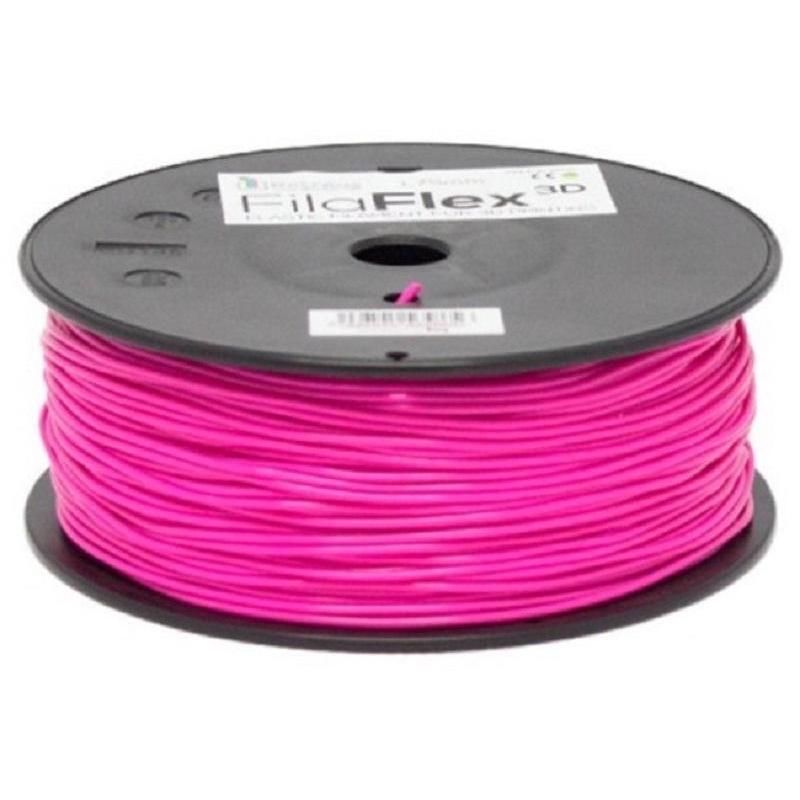
If possible, the recommendation is to Insert the filament directly into the extruder (direct extrusion printers), thus avoiding the use of filament guide tubes (extrusion tube or Bowden type printers). These tubes cause high friction on the flexible filament causing several issues.
But, if, on the other hand, you have no choice and you use this type of tube, make sure that they are made of PTFE (Teflon) material. Pneumatic or silicone tubes are not optimal. Also, make sure to eliminate any bends or kinks that the tube may have by trying to make it as straight as possible to avoid unnecessary friction.
Challenge 3 | Internal pressure of the hotend
And finally, we also must bear in mind the internal pressure of the hotend. Once we have solved the previous challenges, regarding the extruder and the hotend, we move on to a third key factor, which is the diameter of the nozzle.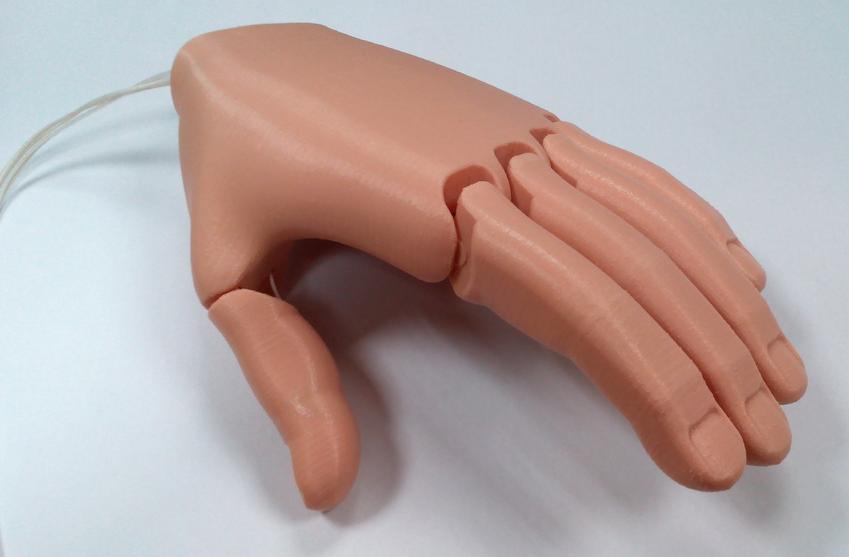 If we use a nozzle with a very small diameter, for example, 0.2 mm, the pressure inside the hotend will increase, therefore, we will not be able to print at an acceptable speed.
If we use a nozzle with a very small diameter, for example, 0.2 mm, the pressure inside the hotend will increase, therefore, we will not be able to print at an acceptable speed.
Solution to eliminate the internal pressure of the hotend
After testing with 0.2, 0.3, 0.4, 0.5 and 1 mm nozzles, as we increase the diameter of the nozzle we will be able to increase the printing speed proportionally. The 1mm nozzle can print high-quality parts as we can still maintain a 0.3mm layer height. It should be said that, depending on the complexity of some perimeters, they will lose some detail, but as regards the resolution of the part in the z-axis, it will still have an optimal quality. Both the 0.4 and 0.5mm nozzles maintain a good print quality/speed ratio, but if you want to experiment, Richrap's Quick-Fit Extruder is great for quick extruder change for REP-RAP style printers or even the Steve Wood design.
Tips
Download Filaflex print profiles
We also recommend that you download the printing profiles for CURA, SLICER or SIMPLIFY3D corresponding to each material, which you have at your disposal in the 'Download files' section in the product sheets for each material, as well as in the 'Print Parameters' section, which you can access from the main menu of the web.
Purchase Filaflex and Flexible Filament Compatible Printers
Currently, there is a wide variety of 'low cost' 3D printers' and with an exceptional value for money that prints the filaments of the Filaflex range phenomenally. If you are interested in printing with these materials, we recommend models such as the Artillery Sidewinder x1 printer.
If you have any further questions, we also recommend that you consult our FAQ.
Do not hesitate to contact our team if you want more information or help in relation to this matter. We will be happy to help you and assist you.
Creativity is Flexible
Happy printing!
Filaflex 95A, ’Medium-Flex’, is the perfect flexible filament for beginners in flexible printing. It's a semi-flexible elastic filament, compatible with all 3D printers on the market, including those with a Bowden extruder (with tube).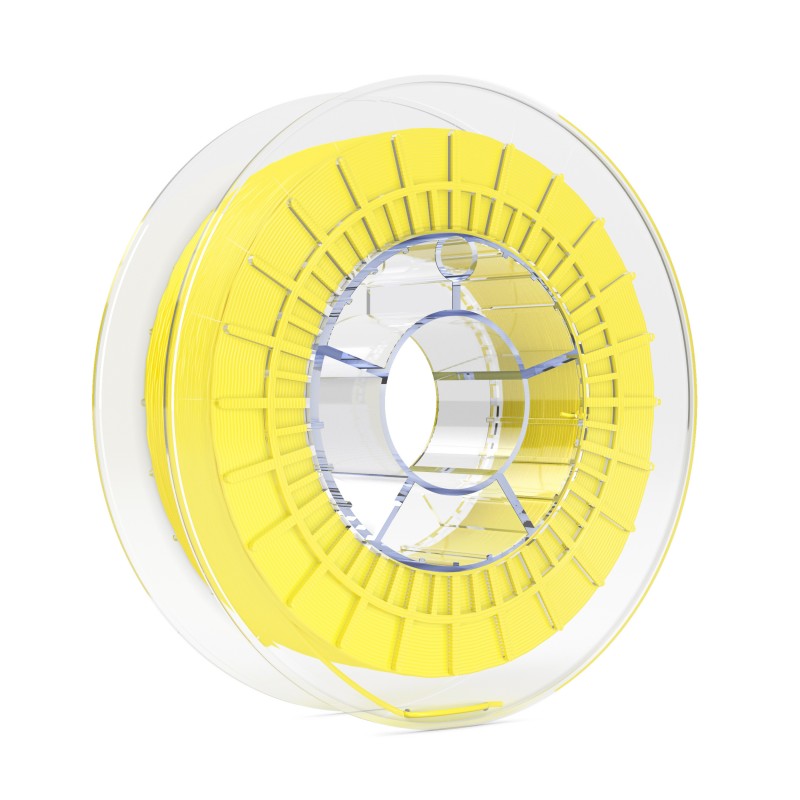 Shore hardness 95A 500% stretch Medium elasticity Compatible with all printers Resistant to solvents, fuel and acetone...
Shore hardness 95A 500% stretch Medium elasticity Compatible with all printers Resistant to solvents, fuel and acetone...
€33.20
The Filaflex 82A Original is the flagship elastic filament of the Filaflex range. The best-selling and most popular flexible filament for 3D printers. Shore hardness 82A 650% stretch High elasticity Resistant to solvents, fuel and acetone Odourless No hotbed required Made in the EU
€33.20
Filaflex 70A, ’Ultra-Soft’, is a highly elastic and advanced flexible filament from the Filaflex range for 3D printers. Shore hardness 70A 900% stretch High elasticity Resistant to solvents, fuel and acetone Odourless No hotbed required Made in the EU
€45.10
Filaflex 60A 'PRO', the most elastic and flexible filament on the market, only suitable for the most 'pro' and intrepid of flexible filament printing. Shore hardness 60A 950% stretch High elasticity Resistant to solvents, fuel and acetone Odourless No hotbed required Made in the EU
Last items in stock
€49.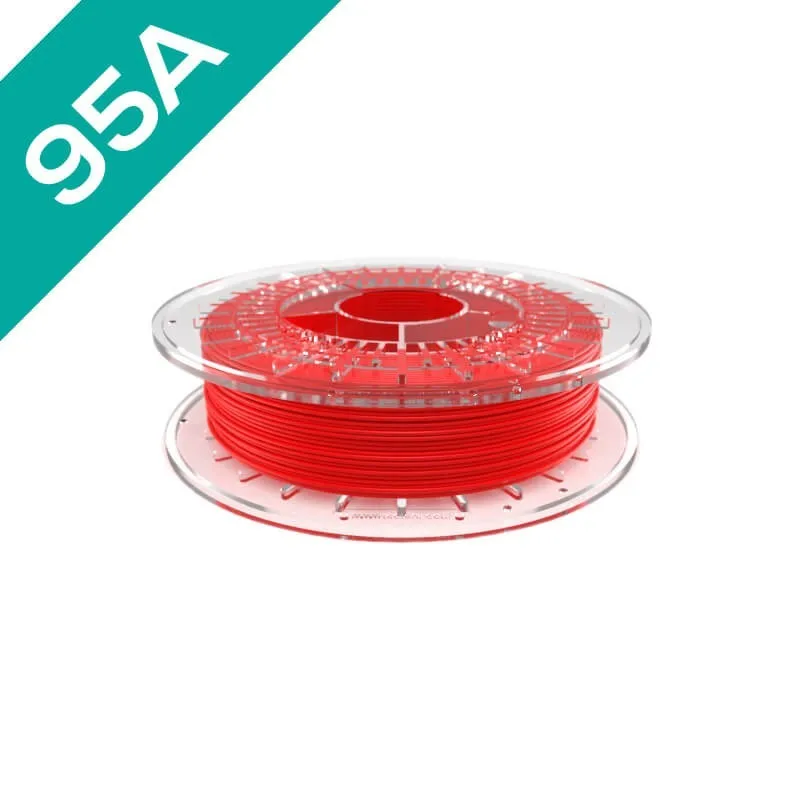 08
08
Fila Flex. Why pull?
Hola amigos!
The creation of flexible filament began in the not-so-distant 2010, when Ignacio Garcia got his first 3D printer. For reasons shrouded in mystery, he really wanted to print shoes and was extremely upset when he found out that the threads were actually limited to PLA, ABS and nylon. And, keeping a real maker in his soul, Ignacio set about searching for the ideal material for him. He did research and development in a garage, trying dozens of possible hot ends and materials. But what happened next?
In 2013, Ignacio Garcia decides to quit his job and found his own company, RECREUS. And not because he is a cheeky Spaniard, but because the recipe for the material that we now know as FilaFlex has finally been found! Initial sales immediately skyrocketed thanks to 3D printable test models of the shoes that were posted on recreus.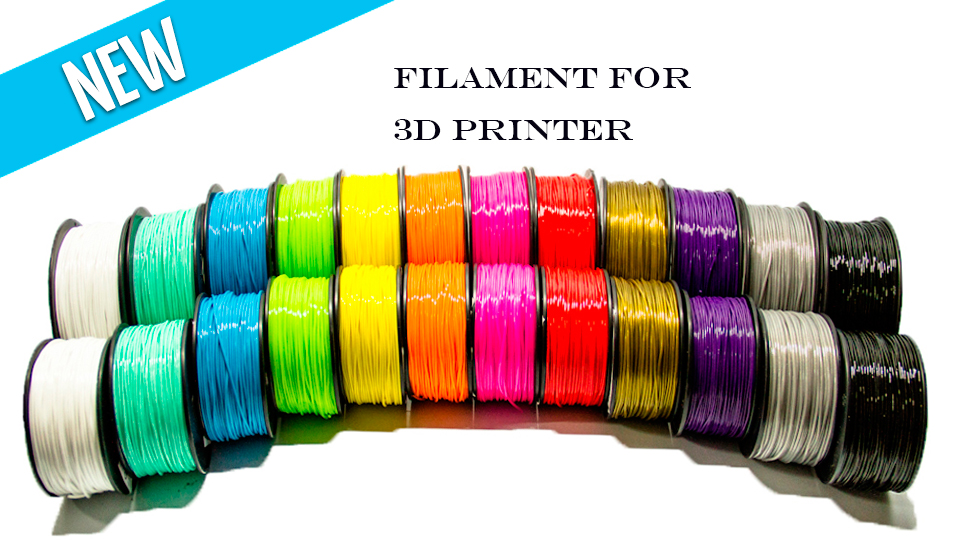 com. What is FilaFlex made of? The main material is polyurethane with additives that facilitate the printing process.
com. What is FilaFlex made of? The main material is polyurethane with additives that facilitate the printing process.
Of course, FilaFlex had some initial problems: many extruders, due to their design, could not print with it. The most popular extruder, at the time of the creation of plastic, was perhaps the classic Mk8.
Due to the low setting of the thermal barrier, there was free space inside the extruder where the soft plastic was twisted and wound onto the pinch rollers. There were other problems, and so Recreus soon released their own extruder models that could be put on almost any RepRap without any problems. Moreover, Ignacio even thought about creating his own model of a 3D printer, which would be designed for the most comfortable FilaFlex printing. Fortunately, now all these are problems of that same 2013 - now there are printers in which the gap of the pressure rollers can be adjusted. For example, in our Hephestos 2 and Witbox 2, it is enough to tighten just one screw.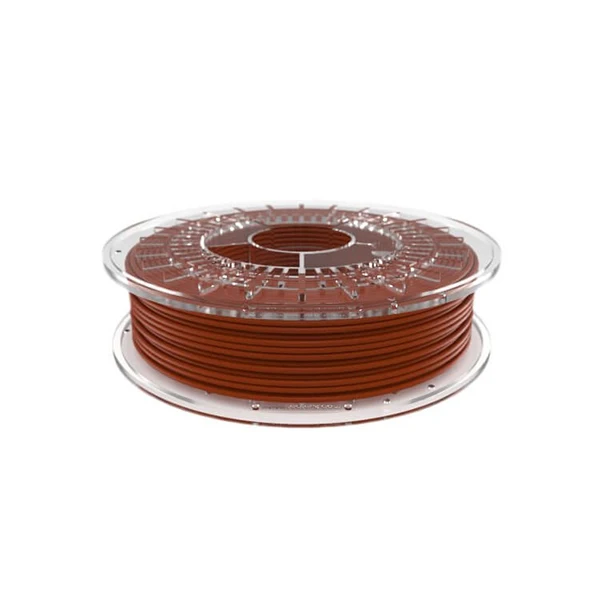
Now anyone can order FilaFlex for themselves. Most often, makers themselves find application for the material, expanding the scope of use of 3D printers. Where is Filaflex already being successfully used?
FASHION
The door to the world of fashion for FilaFlex was opened by the notorious Danit Peleg. Using Witbox and flexible plastic, she created the world's first 3D fashion collection. Many designers were inspired by her example and turned to the new 3D printing technology for them.
More recently, Spanish fashion house Yona Taola has used 3D printers and FilaFlex to create their collection. And if Danit Peleg was a student who dared to use a new technology, then Yona Taola, in turn, is quite famous in the fashion world and would not turn to 3D printing if they were not confident in it. But the results of the show exceeded all expectations and in the future they plan to introduce more and more FilaFlex into their work.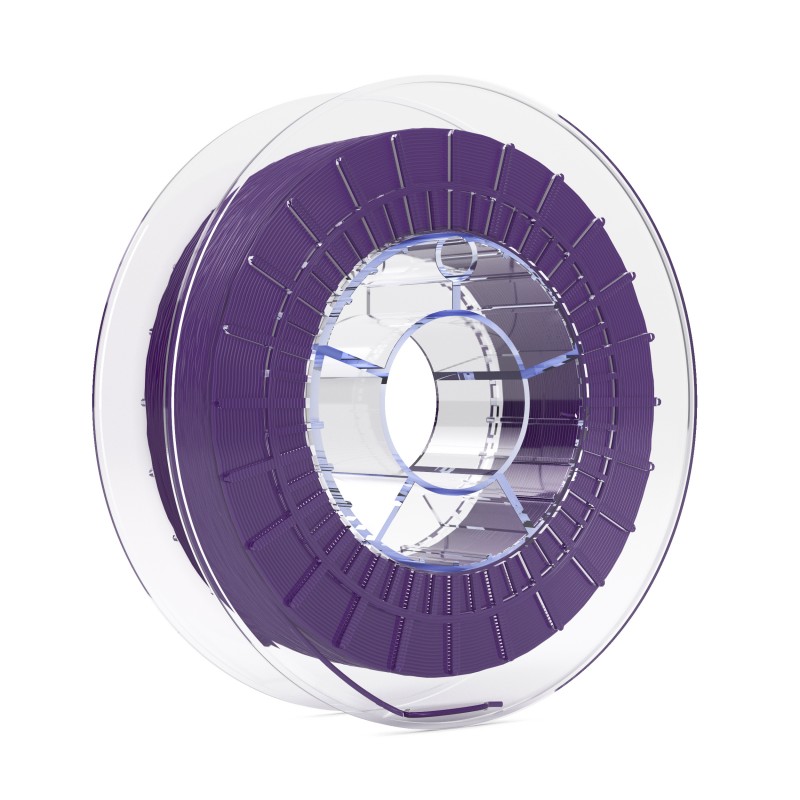
One cannot fail to mention our domestic project ShareCloth, which presented their project at Mercedes-Benz Fashion Week Russia 2017. They plan to create a cloud storage of clothes that can be printed on a 3D printer and, perhaps, they will have to turn the usual idea of our everyday clothes.
However, clothing can be made from other than bare FilaFlex. Here, for example, the Spanish store Chuic! Not risking relying entirely on 3D technology, they print 3D patterns directly onto the fabric of their T-shirts. And, I must admit, the result looks just great.
INSOLE PRODUCTION
An obvious plus of 3D printing is customization. Literally any object can be changed for the convenience of the future user. With such or approximately such intent, the Gensole service from Gyrobot, better known as Steve Wood, was launched. Being an expert in printing flexible plastics, he decided to put his knowledge into practice and created a service that allows you to create an insole for a specific foot using a simple interface.
He was assisted by Damian Axford and Robert Longbottom, and Footworx Podiatry Clinics took over theoretical questions and testing. What do we end up with? A great tool for creating the perfect insole for any foot!
AND THE BIG GUYS UNDERSTAND IT
Nike, New Balance, and other shoe manufacturers are increasingly looking to 3D printing technology to see how it can be applied to their industry. And if before that their products were literally piece copies for a specific athlete, then Adidas went much further: they launched a limited line of 3D printed shoes, which will be sold in only three cities. According to the manufacturer, the combination of the high-density detailing of their sneakers, along with the reduced thickness, allowed the weight of their shoes to be kept as low as possible.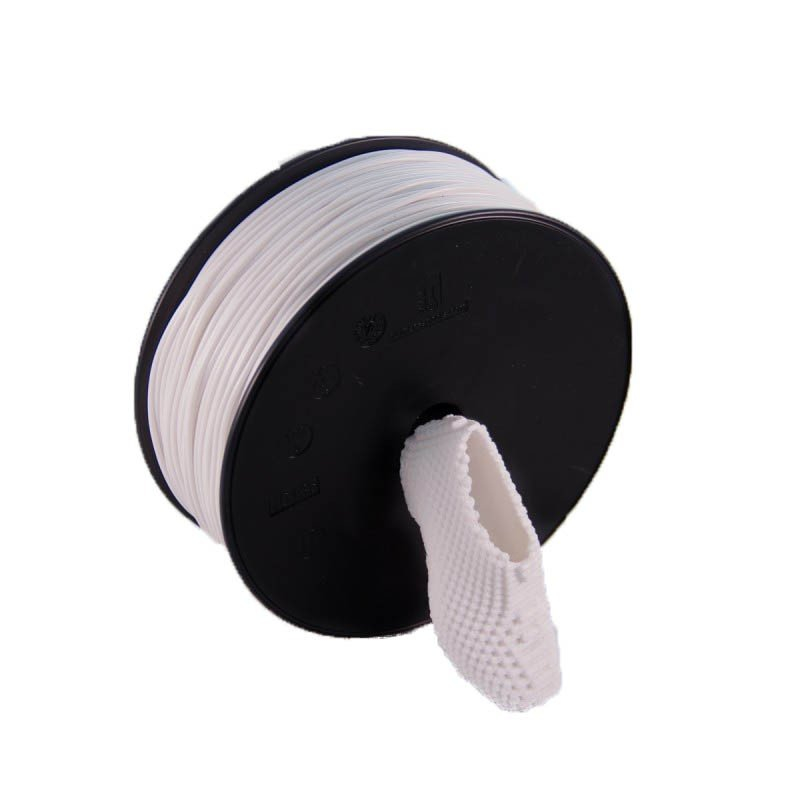
IS THAT ALL?
RECREUS FilaFlex is an excellent material with very similar properties to real rubber. If you stretch it a lot and then release it, the thread will take its original geometric size. You don’t have to worry about finished products either: the layers are securely soldered together and you don’t have to worry that your product will tear with a slight stretch. Clothes, shoes, insoles... Of course, its use is not limited to this. For example, how about a prosthesis that is pleasant to the touch and mimics human skin with its color?
Like many other specialty filaments, FilaFlex excels in the hands of a printer who knows exactly where to apply it. And its potential scope is huge - in fact, these are any areas where rubber is used in one way or another, from toys or pads to full-fledged injection molds. And one of the most pleasant moments is that despite the general softness and flexibility, FilaFlex perfectly builds supports for itself, which allows you to print models with complex geometries even on single-extruder printers.
A variety of materials is extremely important for 3D printing, because the more different properties they have, the more applications a 3D printer can find. By the way, if you get a FilaFlex reel in your hands - any ideas what you would print first? Maybe bring some old idea to life?
Women's sandals on a 3D printer (Filaflex fiber)
Turch September 15th, 2014
The fact that someday we will all be dressed from head to toe in 3D models, I, personally, do not raise any doubts. Whether clothes, shoes, hats or jewelry, there will come a time when almost everyone you see will be wearing something 3D printed. Of course, this will not happen overnight, but since various aspects of the application of 3D printing (feasibility of materials, printing speed, ease of use) continue to develop and combine, which means that 3D printers will become more and more confident in our daily lives. It's just a matter of time.
When I just sit and think about 3D shoes, the first thing that comes to my mind is feet covered with calluses. After all, 3D shoes should be comfortable, and this is almost impossible with conventional hard plastics (ABS or PLA). Another drawback of these materials is their poor ductility, and only flexible materials can provide the tight fit required. That is why shoes are traditionally made of leather or fabric rather than hard plastic.
After all, 3D shoes should be comfortable, and this is almost impossible with conventional hard plastics (ABS or PLA). Another drawback of these materials is their poor ductility, and only flexible materials can provide the tight fit required. That is why shoes are traditionally made of leather or fabric rather than hard plastic.
Recreus takes this into account. They are the manufacturers of the popular Filaflex flexible fiber. There are already many amazing uses for this rubber-like material, but Recreus doesn't want to stop there. Earlier this year, they garnered media attention with their 3D printed Sneakerbot II sneakers. The company is working hard to find new ways to use fiber in amazing ways, most recently releasing comfortable 3D shoes in a different design. This time, women's sandals. Simply referred to as the Recreus sandals, these sandals are easy to print and adapt to fit any foot size.
Ignacio Garcia, founder of Recreus, said he would like "women to start using Filaflex because we are sure they will find many useful uses and fashion ideas.